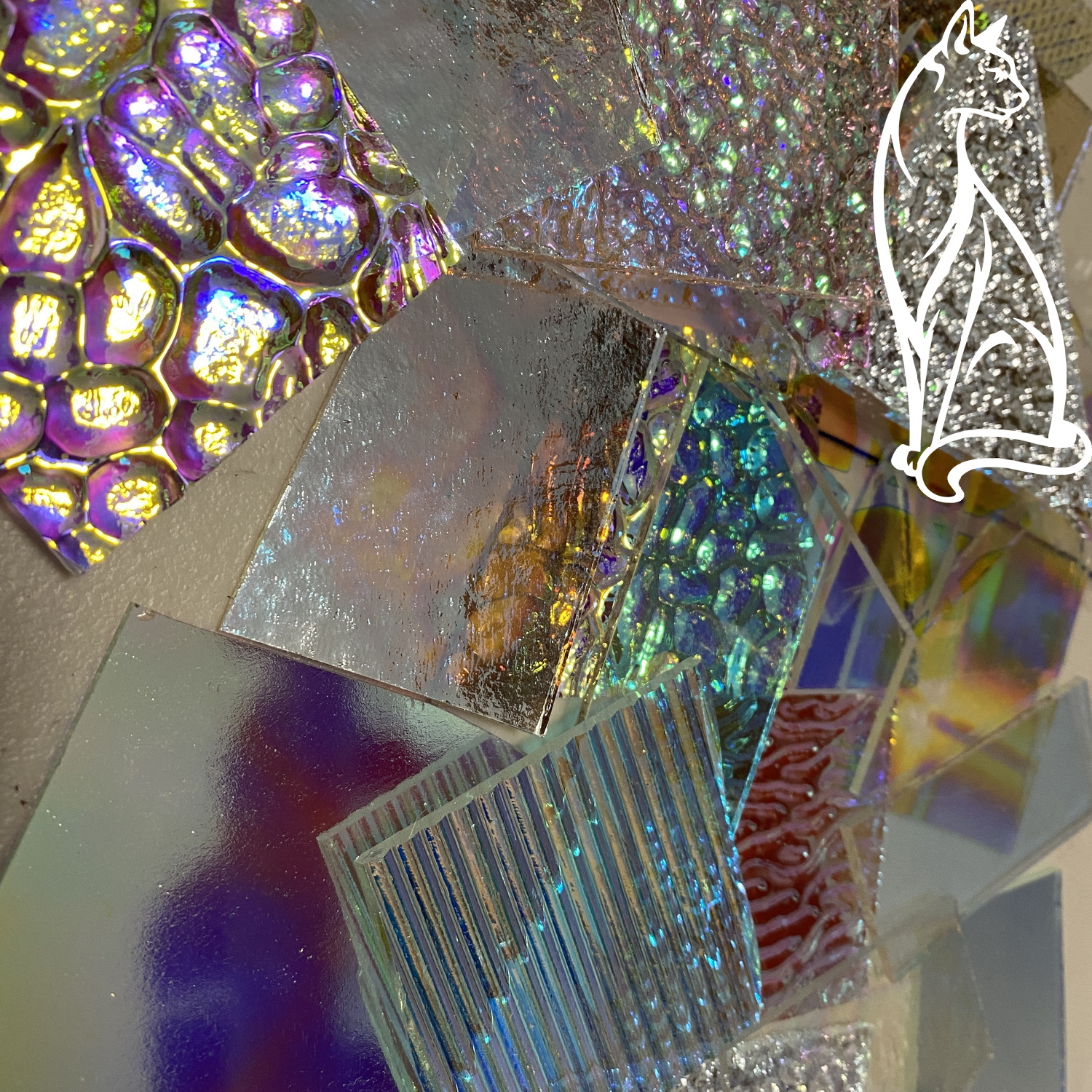Description
Lovely pieces of mixed dichroic – some black, some clear. Patterned, rippled – a variety of stunning colours. Every one is lovely. Suitable for fusing (COE96).
This glass is very expensive, but you don’t need very much to add some pizzazz to your work. It is priced by the gram, and the clear is more expensive than the black. Packs contain 1-2 pieces, dependant on weight. I’ve tried to keep the packs around the 20 gram size.
TIP: When scoring dichroic, and any other form of glass with a film finish, always score on the reverse side to minimise chipping.
Dichroic glass displays one of two different colors depending on lighting conditions.
Modern dichroic material is a composite non-translucent glass that is produced by stacking layers of glass and micro-layers of metals or oxides which give the glass shifting colors depending on the angle of view, causing an array of colors to be displayed as an example of thin-film optics. The resulting glass is used for decorative purposes such as stained glass, jewelry and other forms of glass art. The commercial title of “dichroic” can also display three or more colors (trichroic or pleochroic) and even iridescence in some cases. The term dichroic is used more precisely when labelling interference filters for laboratory use.
Multiple ultra-thin layers of different metals (such as gold or silver); oxides of such metals as titanium, chromium, aluminium, zirconium, or magnesium; or silica are vapourised by an electron beam in a vacuum chamber. The vapour then condenses on the surface of the glass in the form of a crystal structure. A protective layer of quartz crystal is sometimes added.





Reviews
There are no reviews yet.